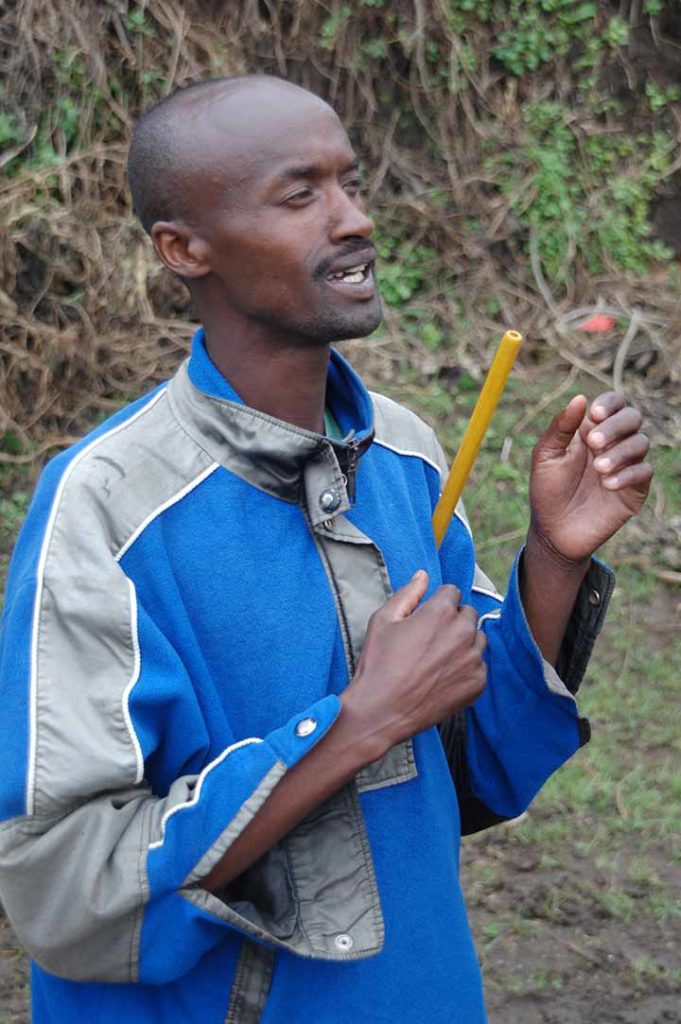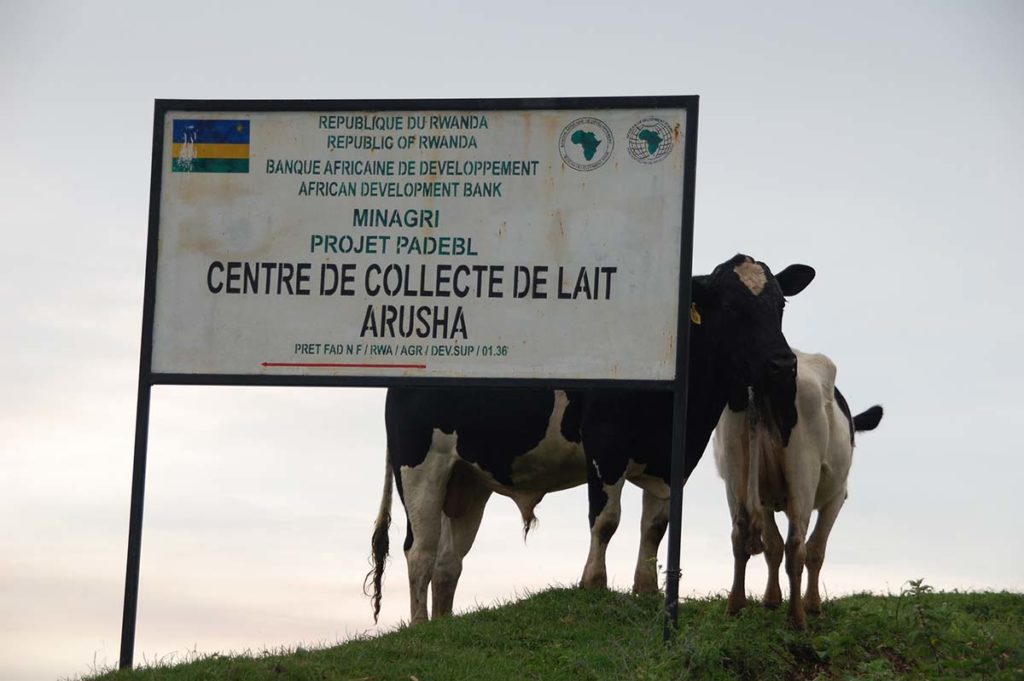Gishwati in North-Western Rwanda once was the country’s second-biggest natural forest. It then became a high-risk zone due to extreme deforestation. Today, it is a highly agricultural region. Thanks to successful water and land management, today food production has gone up following successful land reclamation. A visit on the ground.
Food production has gone up following successful land reclamation of the former high-risk zone in Gishwati forested area, according to Gishwati Water and Land Management project (GWLM). The Ministry of Agriculture and Animal Resources (Minagri) launched the project in 2010 with the aim of restoring the Gishwati ecosystem. Reclamation refers to returning disturbed land to an improved state.
Maize production has increased to four tonnes per hectare, up from 2.7 tonnes at the beginning of the project in 2010. In the former settled valley, a new constructed 0.5km long canal prevents potato fields from flooding. Here, farmers now produce 24 tonnes of potatoes per hectare. John Nshimiyimana, the project livestock, and rangeland management specialist, highlighted this during an assessment tour last week. “We did all that we could. People can now profit from the most fertile soils of Rwanda here in Gishwati,” he said. Among the crops being grown are potatoes, carrots, beans and cabbages. The anti-erosive terraces permit cultivation during the whole year. “And in the forest areas you can even see how forest comes back naturally,” added Nshimiyimana.
Nshimiyimana, however, highlighted that the challenge now is in the redistribution of the reclaimed land in the northwest part of the area. The Land Redistribution Commission headed by Lt. General Fred Ibingira, the Chief of Staff Reserve Forces, will divide the reclaimed land in a new way until the end of 2014.
The Government is set to distribute a total of 6,000 hectares of fertile land in Gishwati to residents as part of the move to boost welfare and protect the forest. This is geared at ensuring maximum exploitation of the fertile part of the rainforest, while protecting the risky zone, according to officials. Minagri envisages that local farmers living in Gishwati will get 0.4 hectares, while farmers living outside Gishwati area will get 0.2 hectares. That seems fair because every household is supposed to get the same size of land, according to where they are living.
However, in an interview, a farmer only identified as Bisengimana said some people have different opinions about the land redistribution:

Those who had smaller plots before are happy with their new land. But the others who got smaller plots than they possessed before do not agree with the idea of fairness in the redistribution he said.
On top of that, regarding the different sizes of households, it is not appropriate to give everyone the same size of land, he added. “A farmer with several children, wives and grandparents should get more land compared to one with only two children and a wife,” said Bisengimana.
Reliable?
Florian Mugabo, responsible for the GWLM project, admits that Gishwati cannot feed everyone. “When people do not get enough for their household, they have to look for more land in other areas,” he said. Mugabo said the ministry still needs to do more sensitisation of people on the redistribution.
But, in general, at the end of the land rehabilitation and at the beginning of the land redistribution, both the ministry and local authorities and farmers are satisfied with the results. “We believe it is possible to benefit from the environment through proper soil management. That’s what Gishwati proves now. We are looking forward to a successful redistribution of land,” Mugabo observed.
Since the mid-nineties, the Gishwati area was denaturalised and former forest spaces became cultivated or settled. Bisengimana recalls: “There was no system. People were cultivating on steep slopes. It was chaos.” This inappropriate land use and impacts of climate change led to soil erosion and flooding in the area. In 2007, 20 inhabitants of a village in the valley died as a consequence of a landslide.
The government decided consequently, to resettle more than 5,000 families out of the high-risk zone to low-risk zones since 2007. Then, in 2010, the restoration of the land started.
The Ministry of Agriculture, the Ministry of Natural Resources, and the Rwanda Environment Management Authority agreed to come up with three land-use types, according to the soil characteristics in the areas: cropland, rangeland and forest. These were fixed in detailed land use maps which were realised during the past three years. From the supposed 1,500 hectares, 1,476-hectare rangeland has been created.

Gishwati, originally a natural forest until 1951, was deforested in the 1980s through farming and in the 1990s during the resettlement of people following the Genocide against the Tutsi. It straddles three Western Province districts of Rubavu, Nyabihu and Rutsiro. Human activities, including deforestation, grazing and the introduction of small-scale farming resulted in extensive soil erosion, flooding, landslides and reduced water quality–until 2007 when the government banned the activities to allow the restoration of the forest and biodiversity.
Ibingira’s team says they want to maximise the fertile part of Gishwati, while conserving risky zone.

